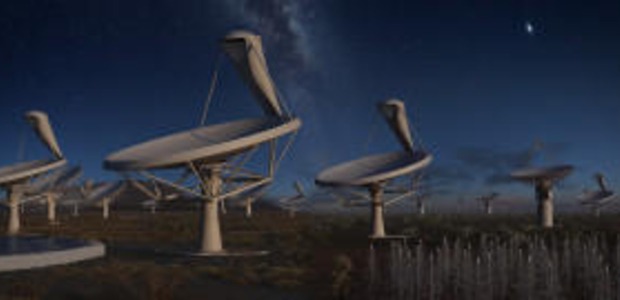advertisement
#Africacom2015: Prof Mkhize calls on African countries to support Square Kilometre Array (SKA) project
Prof Hlengiwe Buhle Mkhize, Deputy Minister of telecommunications and Postal Services in South Africa, has called on all countries across…

Prof Hlengiwe Buhle Mkhize, Deputy Minister of telecommunications and Postal Services in South Africa, has called on all countries across the African Region to support the Square Kilometre Array (SKA) project, which stands to benefit Africa as a continent more as compared to other parts of the world.
Speaking at AfricaCom2015, Prof. Mkhize said, “The scale of the SKA represents a huge leap forward in both engineering and research and development towards building and delivering a unique instrument, with the detailed design and preparation now well under way. As one of the largest scientific endeavours in history, the SKA will bring together a wealth of the world’s finest scientists, engineers and policy makers to bring the project to fruition.”
The history of the SKA begin in September 1993 the International Union of Radio Science (URSI) established the Large Telescope Working Group to begin a worldwide effort to develop the scientific goals and technical specifications for a next generation radio observatory.
advertisement
The Square Kilometre Array (SKA) project is an international effort to build the world’s largest radio telescope, with eventually over a square kilometre (one million square metres) of collecting area.
The history of the SKA begin in September 1993 the International Union of Radio Science (URSI) established the Large Telescope Working Group to begin a worldwide effort to develop the scientific goals and technical specifications for a next generation radio observatory.
The SKA will eventually use thousands of dishes and up to a million antennas that will enable astronomers to monitor the sky in unprecedented detail and survey the entire sky much faster than any system currently in existence.
advertisement
Its unique configuration will give the SKA unrivalled scope in observations, largely exceeding the image resolution quality of the Hubble Space Telescope.
It will also have the ability to image huge areas of sky in parallel a feat which no survey telescope has ever achieved on this scale with this level of sensitivity. With a range of other large telescopes in the optical and infra-red being built and launched in to space over the coming decades, the SKA will perfectly augment, complement and lead the way in scientific discovery.
Both South Africa’s Karoo region and Western Australia’s Murchison Shire were chosen as co-hosting locations for many scientific and technical reasons, from the atmospherics above the desert sites, through to the radio quietness, which comes from being some of the most remote locations on Earth.
advertisement
South Africa’s Karoo desert will host the core of the high and mid frequency dishes, ultimately extending over the African continent. Australia’s Murchison Shire will host the low frequency antennas.
Whilst 10 member countries are the cornerstone of the SKA, around 100 organisations across about 20 countries are participating in the design and development of the SKA. World leading scientists and engineers designing and developing a system which will require supercomputers faster than any in existence in 2015, and network technology that will generate more data traffic than the entire Internet.
The SKA will be developed over a phased timeline. Pre-construction development started in 2012 and will last until the latter half of this decade, involving the detailed design, implementation, R&D work, and contract preparation needed to bring the SKA’s first phase to construction readiness.
The main bulk of the SKA will be built in two main phases, between 2018 and the late 2020s, the first phase will involve testing the full system in a “proof of concept” manner.
For SKA Phase 1, Australia will host the low-frequency instrument with more than 500 stations, each containing around 250 individual antennas, whilst South Africa will host an array of some 200 dishes, incorporating the 64-dish MeerKAT precursor telescope.
Phase 2 will complete the telescope arrays at both sites, and become fully operational in the late 2020s, by which time the SKA will count with some 2000 high and mid frequency dishes and aperture arrays and a million low frequency antennas.
The SKA will already start conducting science observations in 2020 with a partial array.